UPDATE: We love the View 20 here at Expert Reviews, but given the circumstances, we do not recommend that you purchase one at this time. Due to the trade bans imposed by the US government , the future of Huawei (and by extension, Honor) is currently uncertain.
The original article continues below.
Chinese smartphone manufacturer Honor isn’t known for world firsts, but the Honor View 20 breaks the mould: it’s the world’s first smartphone with an in-display selfie camera, beating several major manufacturers to the punch.
This in-display selfie camera (or hole-punch camera or however you want to refer to it) is there to do one thing and one thing only: do away with the notch, which has become almost universally maligned since first appearing on the iPhone X back in 2017.
The innovation doesn’t stop there, however. The laser-etched V-pattern on the phone’s rear glass is awe-inspiring to behold and, to add the icing on the cake, it’s the first flagship phone in nearly half a year to provide a 3.5mm headphone jack.
READ NEXT: The latest Samsung Galaxy S10 rumours
Honor View 20 review: What you need to know
Aside from its notchless 6.4in screen and headphone jack, the V20’s most notable feature is its 48-megapixel rear-facing camera – the highest resolution we’ve seen to date on any phone.
The internals are impressive too. Like Huawei’s own-brand flagship phones, the Honor uses the fastest processor currently available on any Android device, the Kirin 980. Despite all this breakthrough technology, the V20 majorly undercuts its competitors with a tempting price tag.

READ NEXT: Honor 10 review: Honor’s flagship gains a notch
Honor View 20 review: UK release date, price and competition
The Honor View 20 can be had for £500 ; that’s for the base model with 6GB of RAM and 128GB of storage. For an additional £80, you'll get 8GB of RAM and 256GB of storage. It's available on contract from O2 and Carphone Warehouse . In the UK it's available in Midnight Black, Sapphire Blue and Phantom Blue.
Even that top configuration is strikingly cheap compared to other modern flagships. The triple-camera Huawei Mate 20 Pro costs £889 ; the iPhone XR is £749 ; Google’s Pixel 3 and Pixel 3 XL are £639 and £769, respectively; and the Samsung Note 9 comes in at £678 . The only high-end phones in a similar price range to the V20 are Samsung’s Galaxy S9 , now starting at £485, and the OnePlus 6T at £500 .
Best Honor View 20 contract and SIM-free deals:
READ NEXT: Honor View 10 review: An impressive OnePlus 5T rival
Honor View 20 review: Design and build quality
The phone’s first talking point – though by no means its only one – is that notchless design. Instead of extending down from the bezel, the camera is set into the upper left of the phone’s large 6.4in display.
It’s gloriously unobtrusive, thanks to the small size of the lens: it measures a mere 4.5mm across, significantly less than the 6mm of a typical front-facing camera. Engineering this was no mean feat, according to Jimmy Xiong, Honor’s General Manager for Products, but it allows the V20 to deliver a full-face screen with practically no compromise. Finally, we can all stop complaining about the positioning and styling of the notch.

You won’t see a fingerprint sensor on the front of the V20 either: to keep the bezels to a minimum, Honor has moved this to the back of the phone. I might be alone here, but I prefer this to an in-display or a front-mounted sensor; I find it makes unlocking the device easier, and allows you to use gestures, such as swiping down on the sensor to expand your notifications, more naturally.
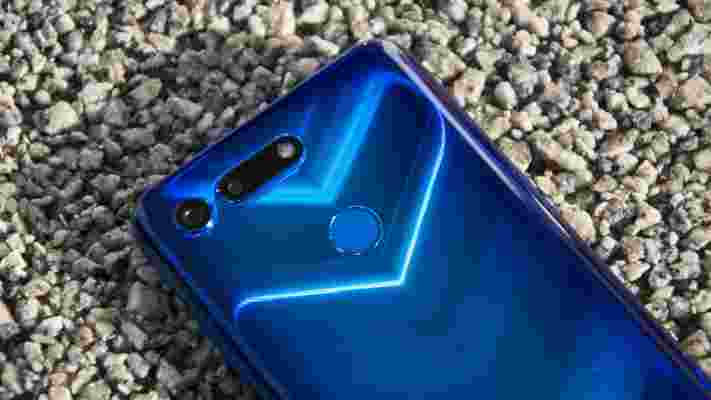
The back of the phone looks almost as good as the front, with the rear glass panel bearing a laser-etched V-pattern that seems to shift with the light. To me, it’s one of the most attractive smartphones around; it’s classier than the colour gradient of the Mate 20 Pro, and one-ups the colourful Honor 10 too. The only drawback is that it’s a little slippery to hold. Along the top, a distinctive compartmentalised design separates the rear-facing camera from the Time-of-flight (TOF) and IR sensors, and the flash module.
At the V20’s top edge, you’ll notice a familiar connector: that’s right, this is a 2019 flagship smartphone that still retains the 3.5mm headphone jack. Thank you, Honor. An IR blaster sits here, too, allowing you to control TVs, air conditioners, projectors and other appliances through the pre-installed Smart Remote app.
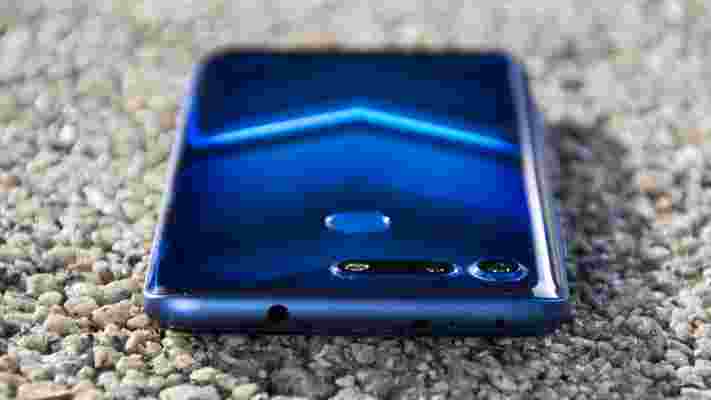
On the right-hand side sit the volume rocker and power button, while a dual 4G SIM card tray pops out of the opposite edge. There’s no microSD card slot, but with at least 128GB of internal space at your disposal, you’re unlikely to need more space.
Finally, at the bottom, you’ll find a USB 3.1 Type-C port and a single downward-firing speaker. I’d have preferred stereo speakers or at least front-facing audio, but you can’t have everything. For wireless connectivity, there’s NFC, dual-band Wi-Fi 802.11ac, and Bluetooth 5.0 with aptX HD and LE codec support.
One feature that doesn’t seem to have materialised is “LinkTurbo”, a proprietary technology which – Honor claims – allows the phone to intelligently combine LTE and Wi-Fi connections. Unlike other phones, which switch back and forth, the View 20 is supposedly able to use both in parallel, for the smoothest possible experience when scrolling through your Instagram feed. I’ve asked Honor to clarify when and whether this capability will appear, and we’ll update this review once we have more information.
The other thing that’s notably lacking is an IP rating. Honor claims that the View 20’s internals are water resistant, but that’s not backed up by any sort of certification, so we strongly suggest you avoid throwing this phone in the pool.
READ NEXT: Honor Magic 2 review: A nostalgic sliding phone with ultra-modern internals – and no notch
Honor View 20 review: Display
The View 20’s full-face, notch-free IPS screen makes a fantastic first impression. It measures a generous 6.4in across the diagonal and runs at a sharp Full HD+ (2,310 x 1,080) resolution at an aspect ratio of 19.5:9.
In terms of image quality however, it’s actually slightly disappointing. Our i1 DisplayPro calibrator found that peak luminance hit a mediocre 387cd/m² in “standard” mode – nowhere near (for example) the dazzling 996cd/m² that Samsung’s Galaxy S9 achieved in auto-brightness mode. In “vivid” mode, the V20 hit 410cd/m², but then colour accuracy takes a hit.
The contrast ratio is some way off best-in-class as well. At 969:1 in standard mode and 1035:1 in vivid mode, it’s not bad, but it can’t compete with the flawless AMOLED displays of Huawei’s Mate 20 Pro and numerous Samsung handsets.
Viewing angles aren’t a huge concern with smartphones, since you’ll normally be looking at the V20 square on, but I did notice a slight blue tint becoming apparent when you look at the display from the side – a minor foible we’ve also observed on the Google Pixel 3 XL.
READ NEXT: Google Pixel 3 XL review: Brilliant, but Google is treading water
Honor View 20 review: Performance and MagicUI 2.0
Inside the View 20 is a Kirin 980 processor, the same chip that powers the Huawei Mate 20 Pro and Honor Magic 2. It’s the fastest CPU you’ll find in any Android phone, at the time of writing, and the Geekbench 4 benchmark shows its power:
^Honor View 20 Geekbench 4 benchmark
As you can see, it’s blisteringly quick, and since even the basic model has 6GB of RAM you should have no problem running lots of demanding apps at once. The 8GB version we tested has all the multitasking headroom you could ask for.
Gaming on the Mali-G76 MP10 GPU is electric, too: intensive games such as PUBG Mobile and Asphalt 8: Airborne are fluid and don’t suffer from the slightest bit of stuttering.
^Honor View 20 gaming performance
In synthetic benchmarks too, the View 20 is on par with its Kirin 980 counterparts, which means it’s a touch faster than phones with last year’s Snapdragon 845 – and the user interface feels perfectly fluid and responsive.
On that note, the V20 is also one of the first phones using Honor’s new MagicUI 2.0 front end, which is set to replace the previous EMUI Android overlay. Frankly, though I couldn’t distinguish any difference between this phone and its predecessor. What I can say is that it’s some way from the stock feel of Android 9 Pie, which will disappoint purists.
Another aspect of the V20 that might disappoint is battery life. Its 4,000mAh battery lasted 14hrs 41mins in the Expert Reviews battery rundown test – well below the 18hrs 34mins achieved by Honor’s Magic 2, and nowhere near the impressive 21hrs 40mins of the OnePlus 6T.
The good news is that if you’re running low on juice, the V20 can be fast-charged to 55% in just 30mins, and fully charged in around an hour. There’s no wireless charging, however – a surprising omission in this day and age.
^Honor View 20 battery life
READ NEXT: Huawei Mate 20 Pro review: Bursting at the seams with features
Honor View 20 review: Camera
The V20’s rear camera isn’t as small as the front-facing one, but it’s still noteworthy thanks to its staggering 48-megapixel resolution – representing 8,000 x 6,000 pixels, the highest we’ve ever seen from any phone, ever. This is made possible by Sony’s latest IMX586 camera module, which uses a large 1/3in (8mm) CMOS sensor and has an f/1.8 aperture with PDAF (Phase Detection Autofocus).
To make the most of all those pixels, the phone’s camera app gives you the option of shooting in both “‘48MP” and “48MP AI Ultra Clarity” modes. Both produce images of the same resolution, but the latter has more fine detail. The trade-off is that pictures take a little longer to capture, so you’ll need good lighting or a perfectly still subject.
^Honor View 20 48MP Ultra Clarity vs 48MP buildings
In the image above, you can clearly see how Ultra Clarity mode benefits the red chimneys, with more detail on the brickwork and a more refined rendering of the glass building in the background.
^Honor View 20 48MP Ultra Clarity vs 48MP sunset
Here again, Ultra Clarity mode captures far greater detail around the building at the foreground. The air vents are easier to distinguish and the scene looks a touch more refined.
While the V20 is capable of capturing some great-looking shots, however, it’s up against some very stiff competition. The Huawei Mate 20 Pro, OnePlus 6T and the Google Pixel 3 XL all have stupendously good cameras: take any one of those and shoot in standard mode, with AI optimisation and HDR disabled, and you’ll see a clear difference in quality.
^Honor View 20 vs its competitors
The View 20’s standard-mode shots simply aren’t as crisp as photos from rival phones, especially the Pixel 3 XL, which captures more detail behind the tree and on the rooftops. One thing that can be said for the V20 is that its colour balance looks impressively natural – the Pixel 3 XL and OnePlus 6T both have a bluer tint, the latter being quite noticeable.
^Honor View 20 vs its competitors with HDR
To get the best from the View 20’s camera you need to turn on HDR. Suddenly, there’s almost nothing to choose between this and the Pixel 3 XL (in HDR+ Enhanced mode), and the 6T’s images look visibly worse. Among the four phones, the View 20 is beaten only by the Mate 20 Pro, which manages to capture better colour tones while retaining plenty of detail.
The View 20 also holds its own in low light, maintaining an accurate colour temperature throughout the scene – and capturing more detail than the Pixel 3 XL. Its results are somewhat noisy compared to the Mate 20 Pro and OnePlus 6T, however; here the Mate 20 Pro is the clear winner, producing near-flawless results in murky conditions.
^Honor View 20 lowlight vs its competitors
The forward-facing camera isn’t quite as absurdly high-res as the rear one, but it’s still a 25-megapixel sensor, with a native resolution of 5,760 x 4,304. That’s a lot of detail, and out of the four smartphones, it also does perhaps the best job of rendering realistic colours and tones.
^Honor View 20 selfie vs its competitors
Here, the View 20’s front camera has done a great job of capturing the Shard and the sunset in background, while not losing the finer details of my facial hair at the foreground of the image. The Mate 20 Pro and OnePlus 6T struggle to keep up, and while the Pixel 3 XL produces a striking picture that might do well on social media, the post-processing makes it look a tad artificial.
The front-facing camera can also record video at up to Full HD+ at 30fps, while the rear sensor can record 4K at 30fps with EIS or 1080p at 60fps. It’ll also do do slow-motion at up to 960fps, including options to film at 240fps in HD and 120fps in Full HD.
With EIS enabled, the phone’s video stabilisation is on par with the Mate 20 Pro, and conspicuously smoother than you’d get on the OnePlus 6T. Both Chinese phones are beaten by the Pixel 3 XL, however, which produces buttery smooth, jitter-free video.
In addition to the V20’s regular cameras, there’s also a rear-facing Time-of-Flight (TOF) sensor for 3D scanning, and a centre-weighted IR sensor for depth. These allow you to scan small objects from around 1m away, and then apply 3D animations to your digital captures. Right now this is mostly a bit of fun – you might use it to bring your favourite cuddly toy to life – but its future potential is exciting. At the launch event in China, Honor suggested that in the future, the sensor could be used to scan entire buildings and visualise large-scale projects in real-time through the use of AR. Unfortunately, this has yet to be released on the Global Version of the View 20 – we'll be sure to update the review once it comes through a software update.
READ NEXT: Google Pixel 3 review: Google’s answer to the iPhone Xs
Honor View 20 review: Verdict
It’s less than four years since Honor released its first phone, and it’s impressive to see how far the company has come in that time. The View 20 sees the brand firmly assert its own identity, away from the shadow of its parent company Huawei – which, given recent controversies surrounding the Chinese communications giant, might be a good thing.
For £500, the View 20 is an incredible package: it’s worth remembering that the phones I’ve compared it go up to £889. Yet View 20 is as powerful as any of them, and arguably beats them all with its innovative notchless design. The rear-facing camera might not win in every category, but it’s perfectly competent – and as a bonus, the phone retains the 3.5mm headphone jack. At this price, there’s simply nothing to compete with the Honor View 20.


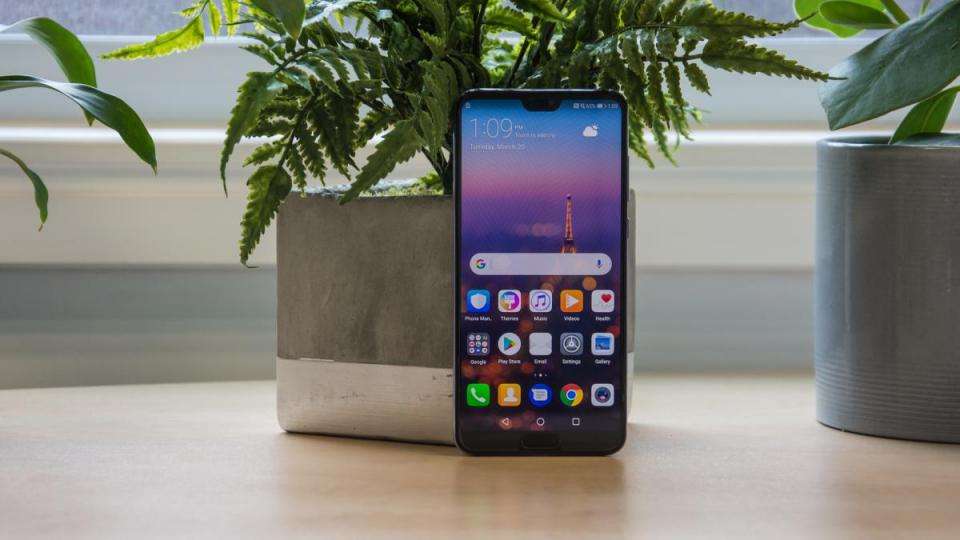

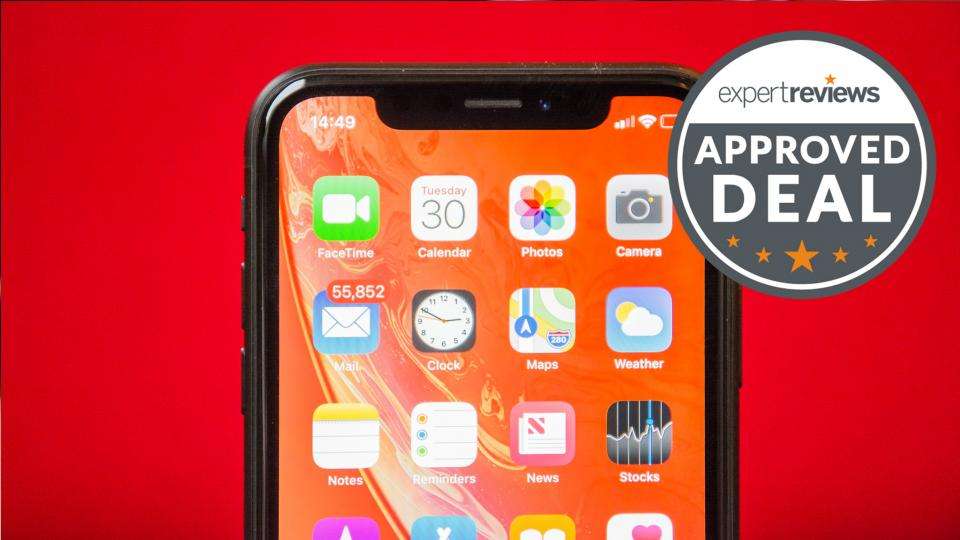
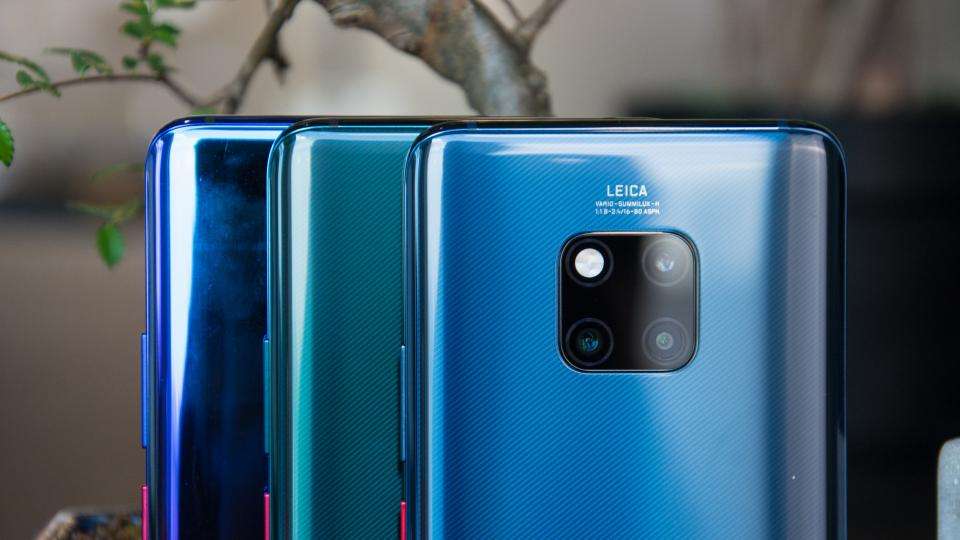
Leave a Reply